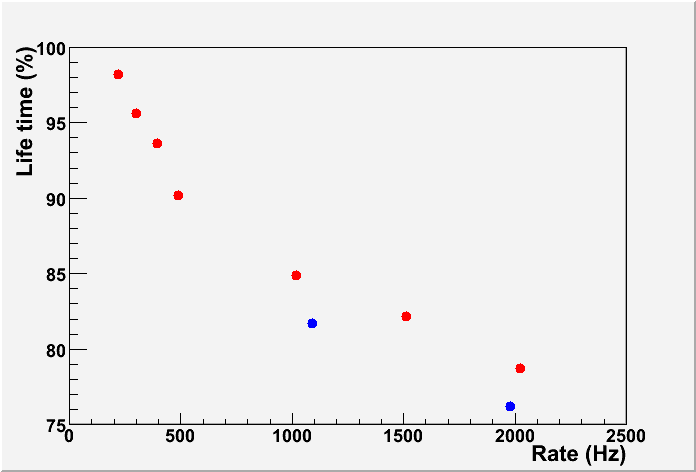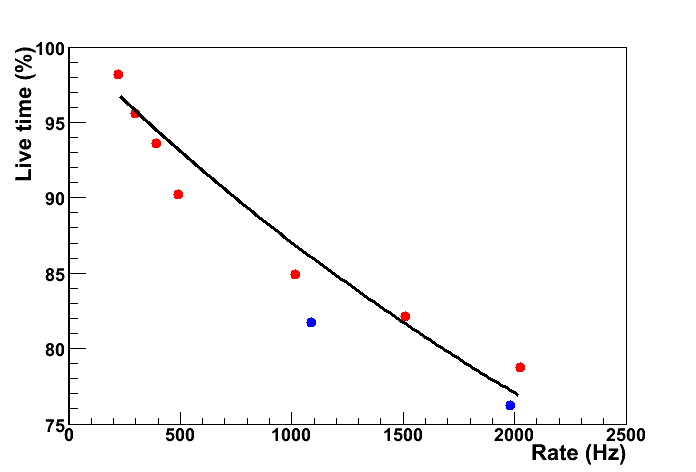CU live time as a function of rate for a random trigger (Benoit Lott, Aug. 2)
The CU live time as a function of trigger rate has been investigated using a random trigger taken from the stochastic noise of a phototube. The rate was adjusted by changing the gain of a fast amplifier placed before the discriminator. The rate of submitted trigger pulses was determined by measuring the number of trigger pulses and those from a 1kHz clock with NIM scalers. The average rate of accepted events was returned by the DAQ application. The ratio of accepted events over submitted trigger pulses corresponds to the live time. The rate was first applied continuously The figure below displays the corresponding results as red dots. The live fraction vs rate relationship does not obey the simple 1/(1+ rate*electronic_dead_time) law applying for a constant electronic dead time. A fit with this function is very poor (see second figure). The electronic dead time value returned by the fit is 148 micro-second. Another set of measurement was taken to be closer to the actual running conditions with beam as the CERN PS beam has a complex time structure. An artificial "spill ON" signal was generated with a gate delay generator, allowing the trigger pulses to be submitted to the acquisition system only 400 ms every 5.6 s. The corresponding results are depicted as blue dots. Surprisingly, the live fraction is lower under these conditions while the buffers should have time to empty between spills. One expects thus expect the dead time to be lower. Further investigation is required to understand this feature.

